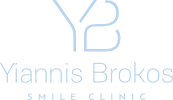Authors: Brokos Y, Stavridakis M, Krejci I.
Abstract
OBJECTIVES:
A fully integrated esthetic restoration should emit levels of fluorescence similar to that of natural dentition. Also, dental practitioners should be able to monitor this property in their routine clinical setting. The aim of this study was to investigate the efficacy of a removable filter for a macro flash illumination set-up required for the digital photographic recording of the fluorescence emission of human teeth and dental restorations.
METHODS:
The traditional fluorescence capturing method in clinical dentistry, using continuous lighting, was compared with the proposed flash lighting method. A digital single-lens reflex Canon 550D camera with a Canon 100-mm macro lens and a commercially available standard Canon MT-24EX twin light macro flash were used in this study. A custom-fabricated plastic o-ring was fixed with silicone to the original flash framework, which received a removable fluorescence filter composed of two 365-nm ultraviolet (UV) glass filters on both sides, covering the flash lamps. The original protective plastic diffusers in front of the flash lamps were replaced with clear plastic to release the full excitation wavelength range of the xenon flash lamps. No additional filter was placed in front of the lens.
RESULTS:
The results showed that using the proposed custom-made flash/filter illumination source, f-numbers between 16 through 22, a shutter speed of 1/60, and ISO 800 or 1600 sensitivity settings attained satisfactory fluorescent digital images. Results were comparable to those accomplished using a traditional photographic technique, without the need for a dark room, extended exposure times, and time-consuming set-ups.
CONCLUSION:
A contemporary photographic technique was demonstrated using macro flash UV-A 365-nm illumination that allowed fluorescent digital photograph acquisition under standard dental office conditions. Fluorescence documentation using a quick, straightforward procedure can take place during the restorative session to help increase the success rate of dental restorations.
